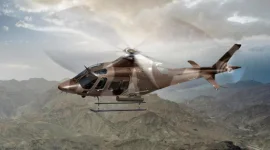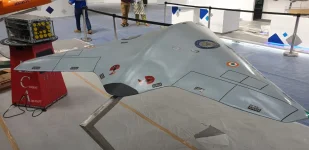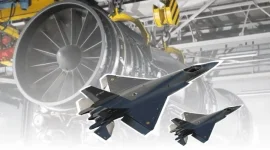- Views: 2K
- Replies: 6
India's domestically developed Light Combat Helicopter (LCH), the 'Prachand', is slated for a significant capability enhancement that will expand its operational role from a ground-attack specialist to a versatile aerial platform designed to hunt and destroy unmanned aerial vehicles (UAVs).
This strategic upgrade for the helicopter, which is being procured in large numbers for the Indian Army (90 units) and the Indian Air Force (66 units), aims to address new and evolving threats on the modern battlefield.
The initiative to modify the Prachand is a direct response to the changing nature of modern warfare, significantly influenced by lessons from recent global conflicts like the war in Ukraine.
Furthermore, the Indian armed forces have observed the increased use of drones by adversaries, including Pakistan's deployment of Yin Yan Hangkong (YIHA) surveillance drones along the Line of Control (LoC).
The growing prevalence of sophisticated Medium-Altitude Long-Endurance (MALE) and High-Altitude Long-Endurance (HALE) drones, which can conduct surveillance for extended periods from high altitudes, has made developing a robust counter-drone strategy a national priority.
To meet this challenge, state-owned manufacturer Hindustan Aeronautics Limited (HAL) is working with the Indian Army to integrate a suite of advanced weapon systems onto the helicopter.
The Prachand is already equipped with a 20mm M621 cannon in a chin-mounted turret, which can fire at 800 rounds per minute and is effective against smaller drones at close ranges.
This will be complemented by proven air-to-air missiles like the MBDA Mistral. In a landmark 2019 test, the LCH became the first Indian helicopter to successfully engage a moving aerial target with an air-to-air missile, demonstrating its foundational anti-air capability.
A key innovation in this upgrade program involves equipping the Prachand to act as a "mothership" for launching smaller, specialised drones.
In collaboration with private sector defence firms, the Army is developing air-launched UAVs that can be deployed from the helicopter's stub wings. These drones are being designed with an operational range of 50 to 100 kilometres, allowing them to perform intelligence, surveillance, and reconnaissance (ISR) missions or act as interceptors.
Once launched, the helicopter crew can guide these drones mid-flight to track and destroy larger enemy UAVs by detonating in their proximity, enabling the Prachand to eliminate aerial threats from a safe standoff distance.
In addition to its new anti-drone focus, the Prachand's ground-attack capabilities are also being expanded through the integration of loitering munitions, often called "suicide drones."
These weapons can be launched and then orbit over a target area, allowing operators to identify and strike high-value assets like enemy armour, air defence systems, or fortifications with high precision.
This would provide Prachand crews with the ability to engage targets from distances greater than 20 kilometres, a significant improvement over the current 7-kilometre range of the HELINA anti-tank missile and a crucial advantage for survivability against short-range air defence systems.
This multi-faceted upgrade transforms the Prachand from a dedicated attack helicopter into a comprehensive multi-role aerial weapon system.
By combining direct-fire weapons, air-launched drones, and loitering munitions, the Prachand fleet is being prepared to effectively counter a wide spectrum of modern threats, solidifying its role as a critical asset for India's national defence.



